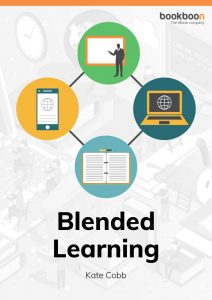Why audio is an essential part of your blended learning strategy


While the idea of learning through listening has been around since the invention of the radio, thanks to their hands-free mobility, consumption of new auditory learning materials such as audiobooks and podcasts is rising at a rate of nearly 40 percent every year making it the fastest-growing format in publishing (1). Audio, particularly when paired with another learning material, is one of the most effective and engaging ways to learn (2).
While eBooks and other learning materials remain important resources, it is essential that L&D professionals recognise the growing desire for audio learning and how it pairs with or enhances existing learning materials. Let’s look at 4 of the benefits of adding audio to your blended learning strategy.
Hands-free learning on the go
The next time you find yourself walking home, sitting on public transit or at the gym, before you plug in your own earphones, look around you. What you will likely notice is that most people are listening to something on their mobile devices. Whether it’s shopping, exercising, commuting or cooking dinner, audio is the one form of learning that not only can be consumed while doing something else but is also completely hands-free. This allows for what author, philanthropist and life coach, Tony Robbins calls the ‘No Extra Time’ method. The idea that adding audio learning into another activity turns ‘downtime’ into moments of productivity (3).
Digital learning platforms should be taking advantage of these key learning opportunities by providing mobile digital learning such as podcasts or audiobooks to complement or enhance their existing digital learning materials.
Audio information is retained easily
Because of the growing affinity for podcast-style entertainment, many learners, particularly young learners, retain information from audiobooks more easily than through reading alone. Especially when used to enhance other learning materials, audio learning is an effective way to maximise retention and promote a fast turnaround on skills (4). Furthermore, when information is delivered in an engaging way, people tend to learn more effectively. Narrators of audiobooks can provide a compelling sensory experience to learners by leveraging emotions through exclamation and vocal range. For many people, the greater the sensation, the greater the potential that the learning will be remembered (5).
Multi-format is the future of engaging learning
In order to engage the ever-changing, multi-functional modern worker, a multi-format approach to learning is the way forward. The use of audio in digital learning has long been proven effective but according to a study by ASCILITE, when audio is used in conjunction with other resources in a multi-format approach, it is one of the most engaging ways to learn (6).
Audio expands your accessibility
Not everyone learns at the same speed or in the same way. For those with learning disabilities such as dyslexia or physical disabilities such as visual impairments, reading in the traditional sense can be challenging, ineffective or even impossible. Audio learning opens up learning opportunities for employees with disabilities, providing new skills and opportunities for growth that other materials do not. On top of the accessibility benefits, audio learning can provide essential information on disability to non-disabled employees. Many digital learning platforms also offer audio learning materials that can help expand non-disabled employees’ knowledge of inclusive language and prevent disability discrimination in the workplace.
The growing popularity of auditory education as a form of entertainment is certainly beneficial for the L&D industry and by adding audio into an existing learning mix, organisations will reach more learners and develop their skills through the most effective, accessible and engaging way.
Explore the advantages of choosing a blended learning approach to training and how to introduce it for the maximum benefit of both your organisation and your learners with our free for a limited time eBook, Blended Learning here.

RESOURCES:
1 https://www.wsj.com/articles/the-fastest-growing-format-in-publishing-audiobooks-1469139910
3 https://www.tonyrobbins.com/importance-time-management/time-management-tips/
4 https://www.inc.com/john-boitnott/8-reasons-millennials-are-learning-through-audiobooks.html
5 https://www.inc.com/magazine/201704/coeli-carr/millennials.html?cid=search
6 http://www.ascilite.org/conferences/sydney10/procs/Sankey-full.pdf



